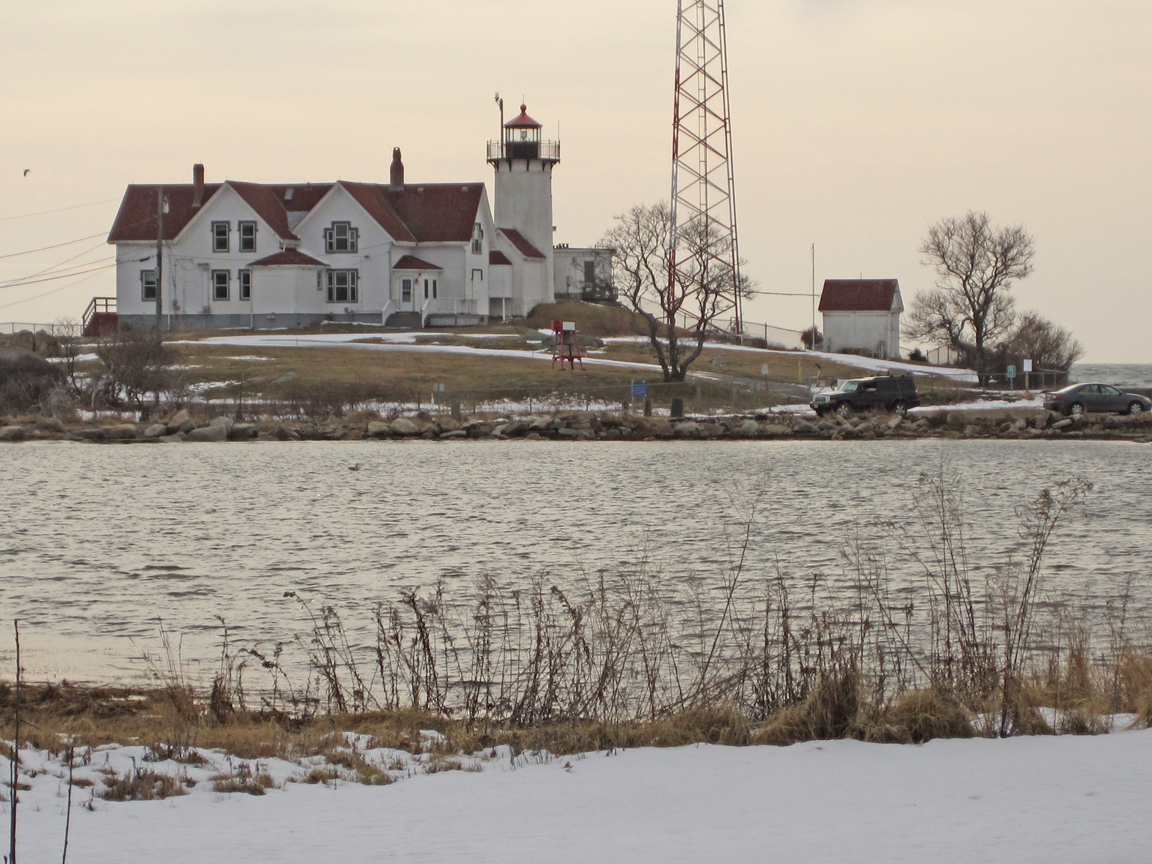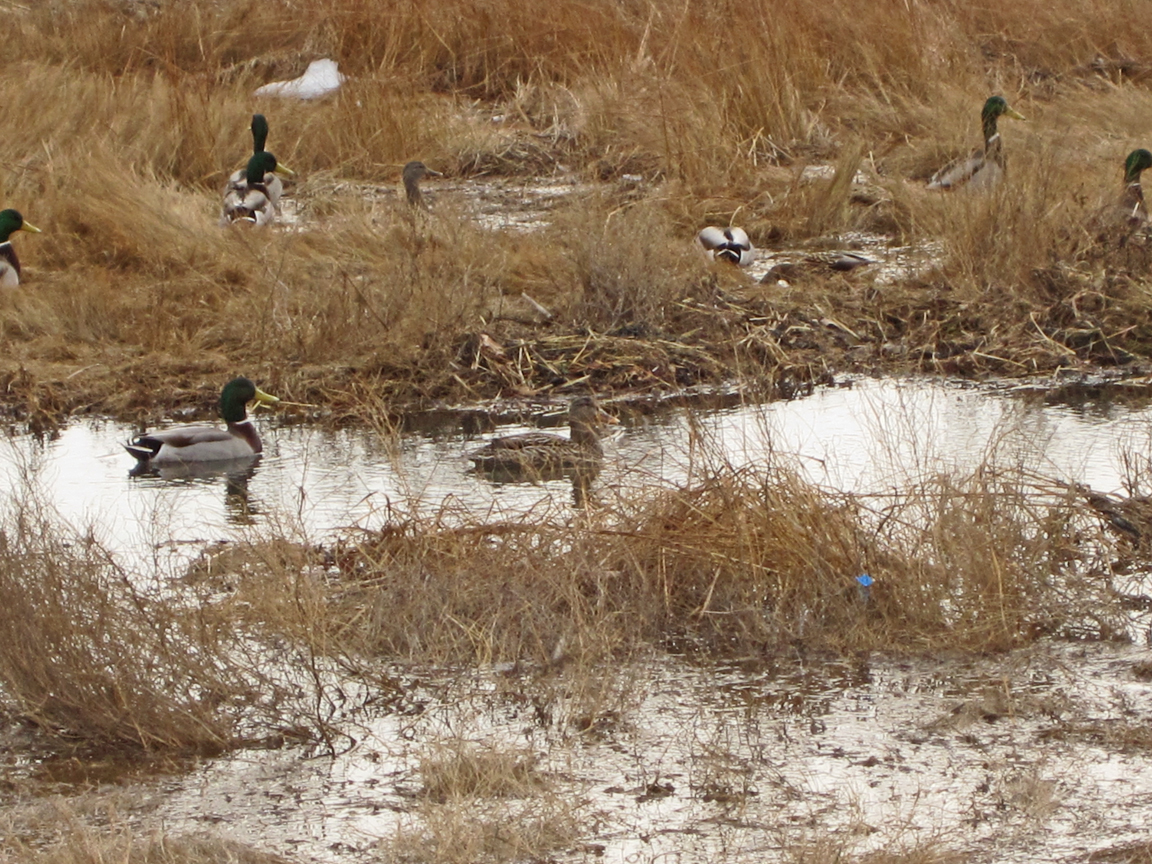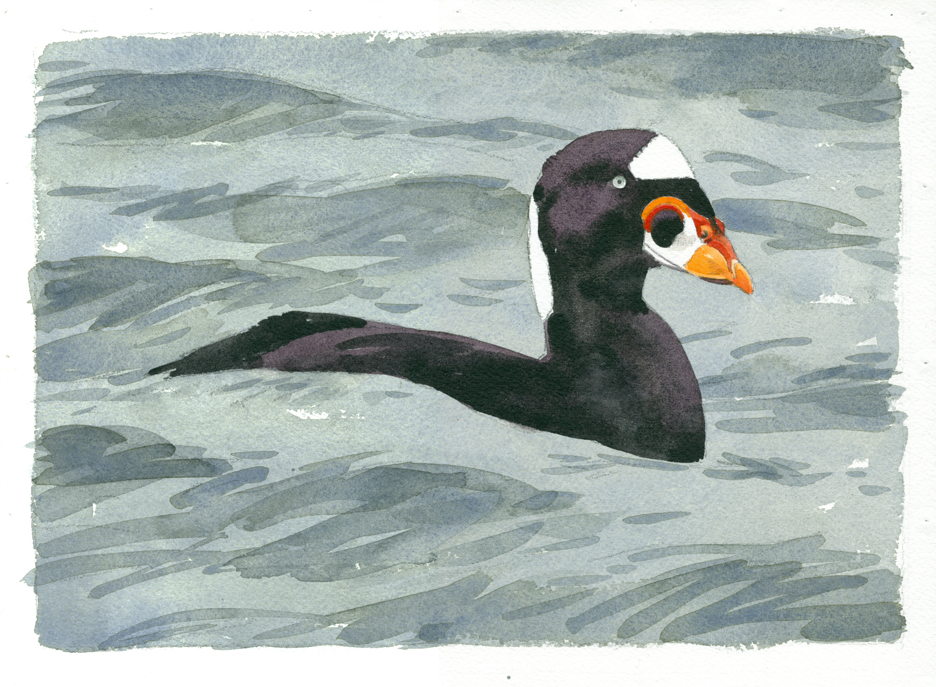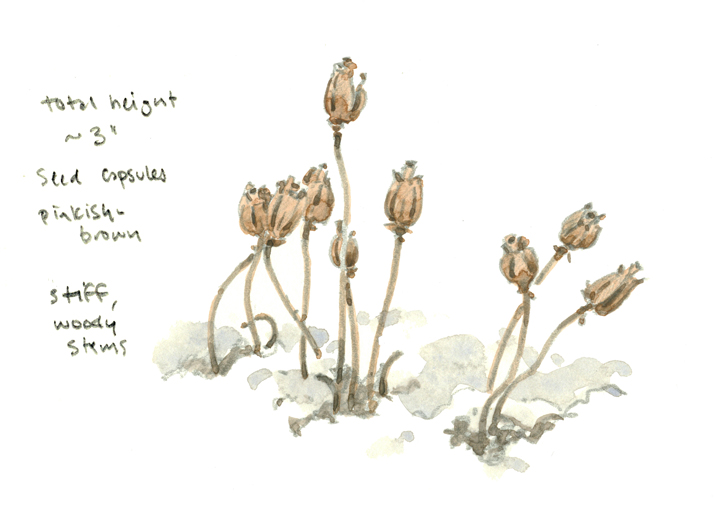This is from a series of posts by MABA resident artist Barry Van Dusen
January 26, 2016
Eastern Point Wildlife Sanctuary, Gloucester, Part 2
I had brought along Chris Leahy’s excellent GUIDE TO WINTER BIRDING ON CAPE ANN, published by Bird Observer Magazine. This special reprint (I covet my copy), covers every nook and cranny along Cape Ann’s shore, with detailed notes on access, vantage points, and perhaps most importantly in this tight mix of public and private land – PARKING! Although I spent most of my day at the sanctuary, I used this guide to explore adjacent areas, all of which are prime hotspots for birds.
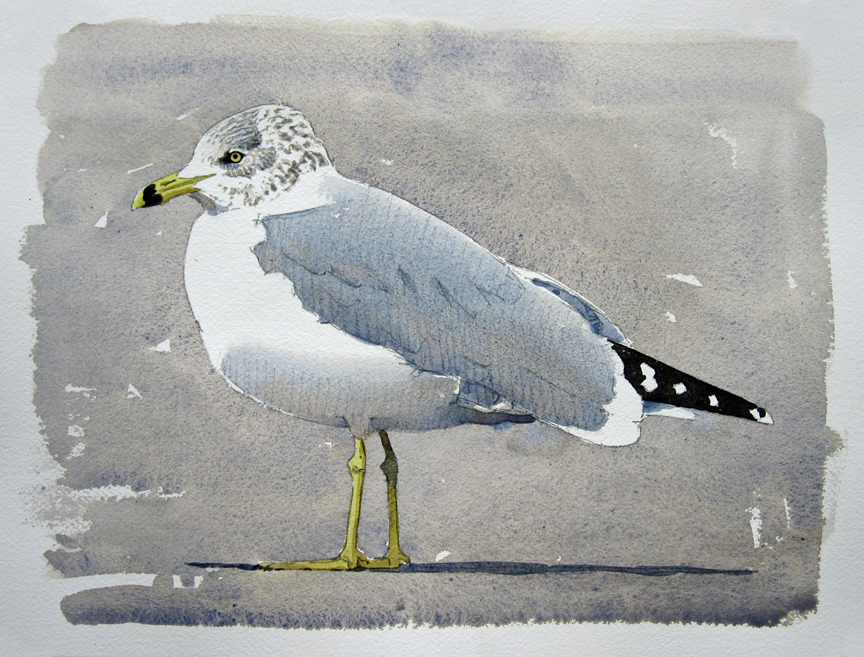
Ring-billed Gull – one of the common gull species at Eastern Point
The area is of special interest to those interested in gulls and gull identification. Indeed, you could hardly find a better spot than Eastern Point in winter for a good variety of Larids. Today, and with Jim Berry’s help, I observed seven species of gulls in dozens of plumages. Besides the more common species – Herring, Great Black-backed, Ring-billed and Bonaparte’s – we found as many as six Iceland Gulls, two Glaucous gulls and one Black-headed gull!

Here’s the drill: You set up your scope at Niles Pond and methodically work your way through the throng of gulls loafing on the ice. You look for anything unusual or out-of-place: individuals of a slightly different size, odd colored legs and bills, slightly lighter or darker mantles, subtle shifts in overall color, and especially – pale wing tips.
The view of Niles Pond from the south end of Brace Cove was the best spot for studying gulls, today. Not only was this spot closest to the birds, but it was protected from the wind, and I could sketch comfortably.
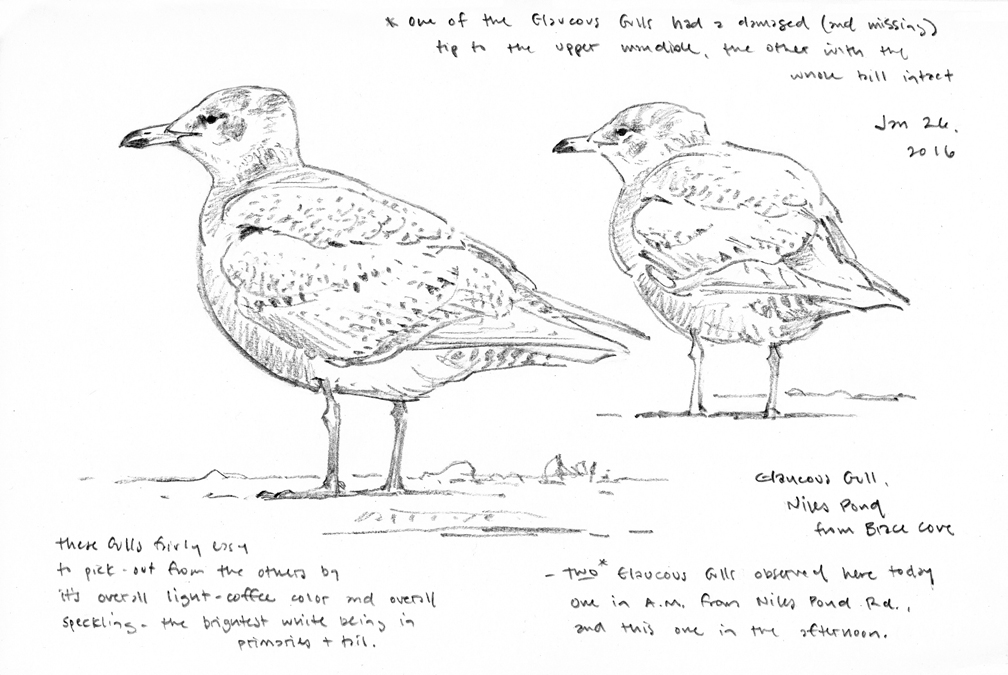
Sketchbook studies of a Glaucous Gull, pencil, 9″ x 12″
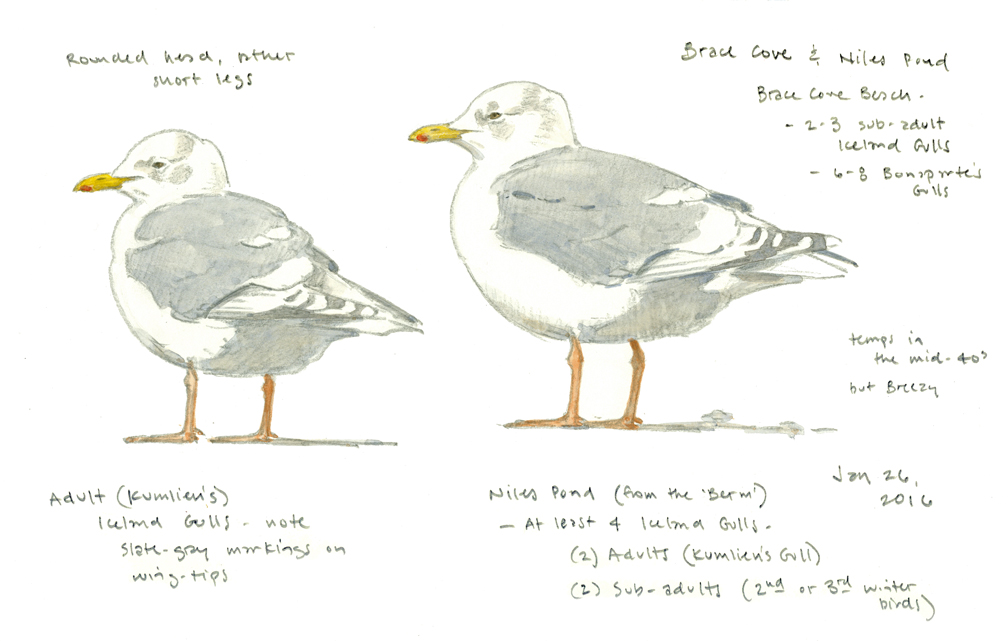
Sketchbook studies of an adult Iceland Gull, pencil and watercolor, 9″ x 12″
Brace Cove Beach was also a good spot for gulls. The sub-adult Iceland gull in this painting was foraging in the waves just off the beach, and a nearby flock of Bonaparte’s gulls was joined by a single black-headed gull.
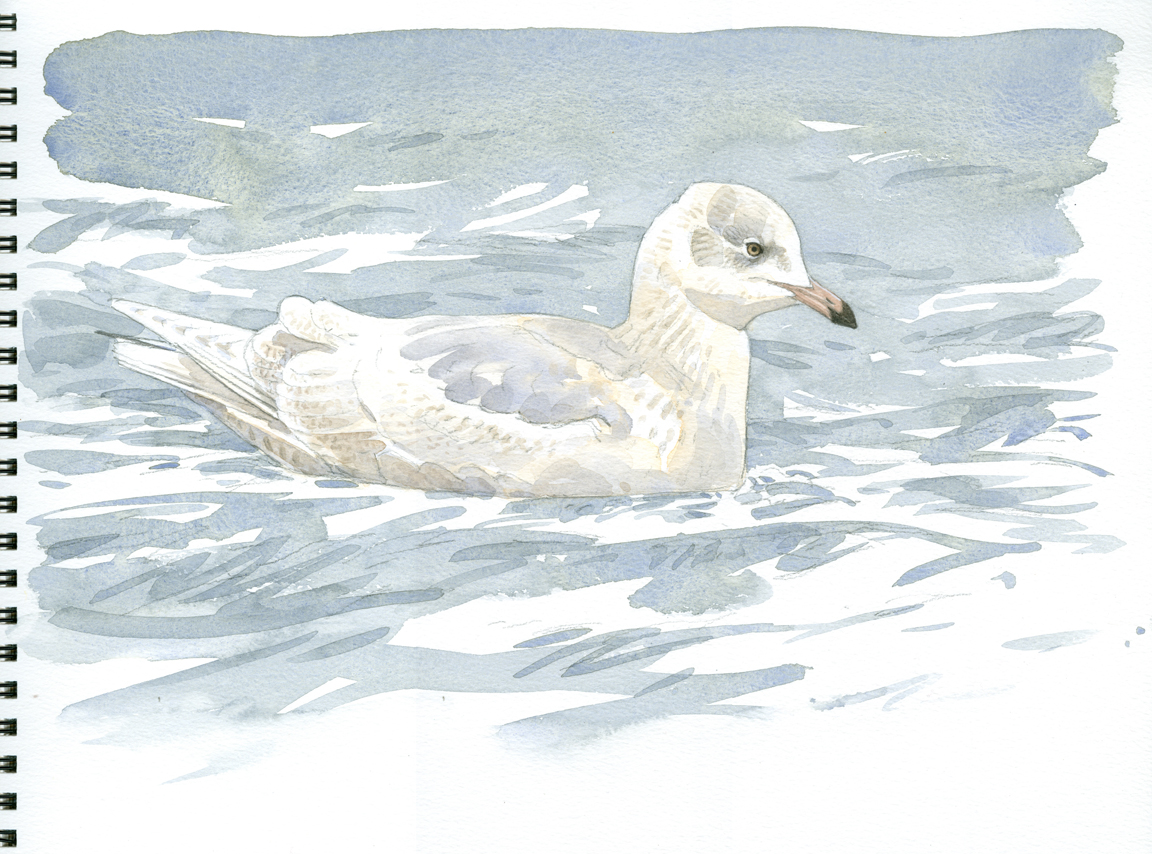
Iceland Gull (subadult), watercolor on Winsor & Newton cold press, 12″ x 16″


